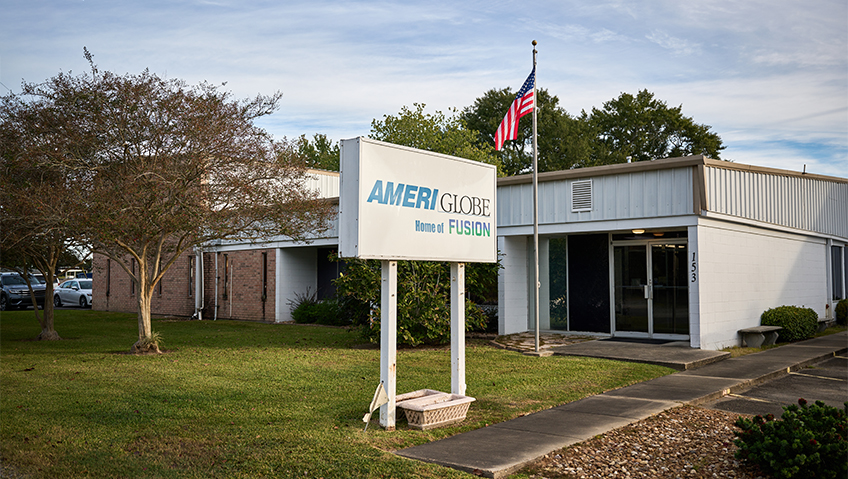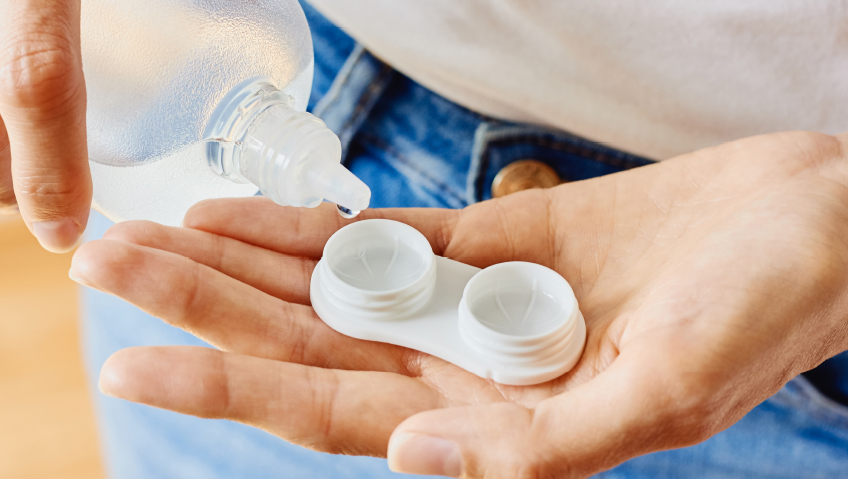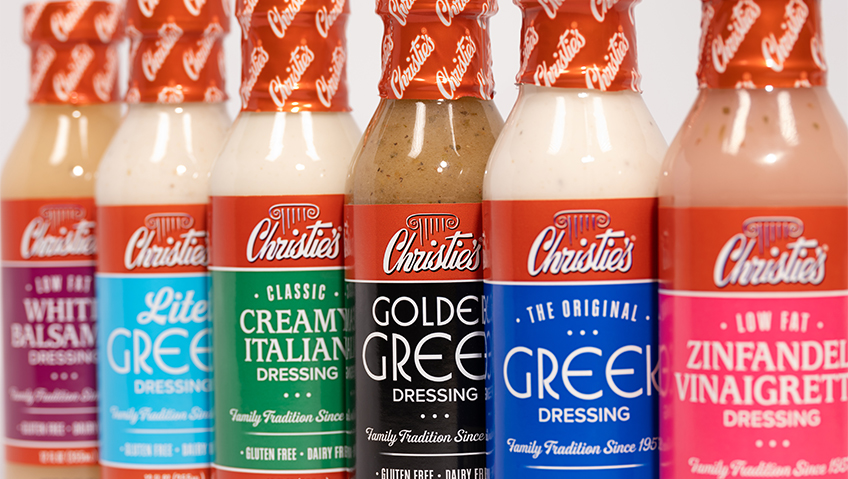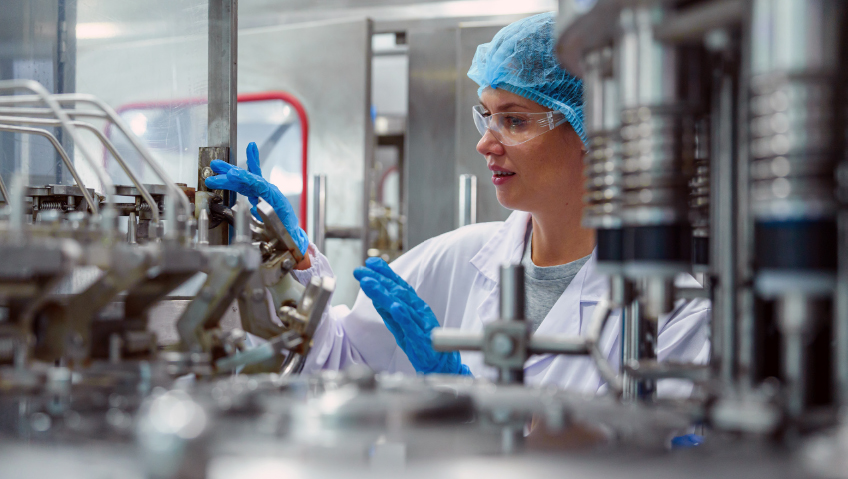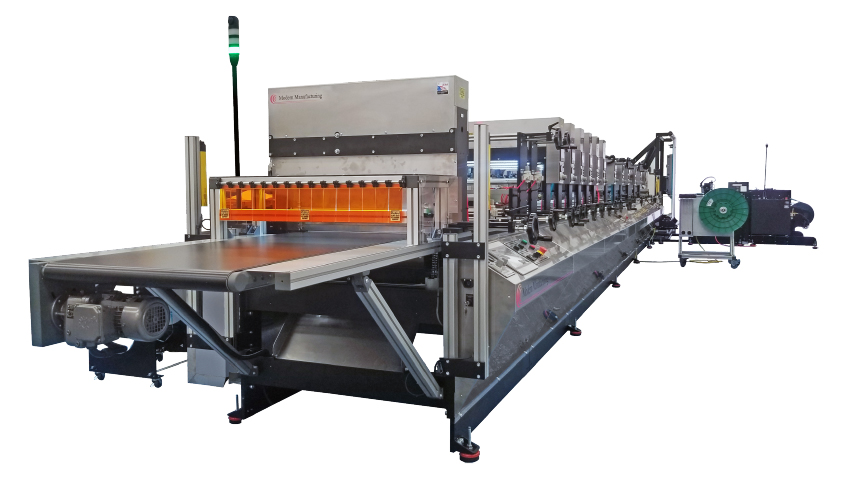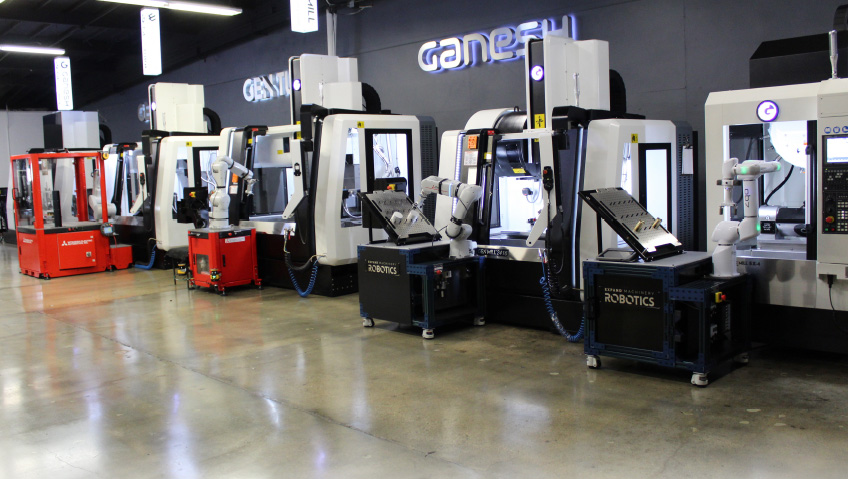With headquarters in Lafayette, Louisiana, and a second operation in nearby Eunice, AmeriGlobe is the largest bulk bag manufacturer in the United States. It is dedicated to producing solutions that meet customers’ needs while reducing their operating costs, and to investing in research and development to continually improve product offerings that will be both economical and sustainable.
Among its patent-pending products is the revolutionary fused polypropylene bag, developed in cooperation with Dow Chemical. This product received the 2017 R&D 100 Award as one of the year’s most technologically innovative inventions and has the potential to become an industry game changer if widely adopted.
Celebrating 29 years in business
AmeriGlobe’s roots go back to 1985 when Daniel (Dan) Schnaars Sr., who had been working in the bulk bag industry for five years, started his own company, first known as FlexCon (Flexible Container) Systems.
It began simply with a single pickup truck. But appearances can be deceiving, and what was more important than the size of the operation was Schnaars Sr.’s concept of how to improve the functionality of the bulk bags, and by extension, improve suppliers and manufacturers’ abilities to transport goods, ranging from food ingredients and pharmaceuticals to chemicals and fertilizers, efficiently and cost-effectively.
As Schnaars Sr. says, it’s hard to think of a product that doesn’t start in a bulk bag. They are linked through the supply chain to every industry.
Standing apart from the competition
AmeriGlobe has remained a family business, with President and owner Schnaars Sr. joined by sons Daniel (Danny) Schnaars Jr. and Matthew Schnaars as Vice Presidents, and this has given the company a distinct advantage.
“We don’t drive hard for every penny like companies listed on the stock exchange, who must show improved profits every quarter,” Schnaars Sr. says. “We live comfortably, and we help our customers do the same but not through driving everything down to the last penny. Instead, we use our profits to research ways to produce better bags.”
Adds Schnaars Jr., “It’s not just the better packaging we’ve developed; it’s the use of the package that separates us from the competition. Instead of treating the package as a commodity the way our competition does, we will do a complete system review with them. We’ll go into a plant and look at all the issues associated with the package, how it’s loaded into containers, how it’s filled, how it’s warehoused, what kind of situation or damage are they looking to avoid, what situation could cause a leak through a seam—and we fix those problems and bring their total systems cost down,” he explains.
“Our competition may produce a cheaper bag than us, but we will lower the total cost by reviewing a company’s system and presenting them with practical solutions. It never surprises me to learn we have saved a company the entire cost of the bags by fixing the system.”
Schnaars Sr. illustrates this point by sharing his experience of visiting a seasonal operation that needed to move quickly and watching the opposite happening, as it required three workers to lift one bag: the forklift driver and two workers holding it. His solution? The addition of “stevedore straps” to the bag, something used 30 years ago by cranes to load ships. This simple, low-tech solution allowed the forklift driver to lift the bag by himself and the other two workers to attend to other jobs.
Adds Schnaars Jr., “It’s not a novel solution, but having our people on the ground is beneficial because we can see a problem and recognize how to solve it. Most bulk bag companies don’t visit their clients,” he says, “and they are always pleasantly surprised when we say we would like to.”
While some of AmeriGlobe’s bags are manufactured offshore—something that under the present manufacturing climate in North America many companies do to remain competitive—at least 15 percent of its products are manufactured in the U.S., and this is another advantage.
Some manufacturers are willing to pay extra to secure a reliable supply, he tells us. This was particularly important during COVID lockdowns, but also when situations arise such as the recent one in the Suez Canal which created several weeks’ delay in shipments, compromising the supply chain, with repercussions for many industries.
Revolutionizing the industry
Over the last 29 years, AmeriGlobe, in its quest to improve the industry, has developed more than 30 patented or patent-pending products. One of the earliest involved reshaping the top of the bag to be conical such that the bag could be over-filled, allowing 26 percent more volume to be packed in. Another innovation was the MegaBase®, which provides the stability of a baffle bag but without the additional 30 percent cost to make a traditional baffle bag with expensive internal baffling.
There’s also the FreePac™, which eliminates the need for wooden pallets for shipping, and the patent pending FreeStanding Drum Bag, which provides the same stability as an expensive drum for liquids but weighs less than two pounds, thus reducing freight costs.
But as important as all these innovations are, there was an inherent issue with sewn bulk bags that no company was able to address. No matter how well-sewn, the products held by the industry-standard woven polypropylene fabric were subject to contamination or outward sifting of the product through the seams with their 1,100 needle holes.
To overcome this, 10-foot-long polyethylene liner bags were provided by bag manufacturers, which created a new problem for end users when the liners slipped into the equipment that was receiving the raw product. AmeriGlobe fixed that problem by patenting a way to securely attach the liners, variations of which other companies then adopted.
Fusion Bulk Bags – toward a more sustainable future
But while the liners partly solved one problem, they created others. They doubled the amount of plastic used, increased the weight of the bags, which added to shipping costs, sometimes still came out if they weren’t anchored securely enough, and made recycling the bags difficult. Polyethylene liners must be separated from the polypropylene bags and many recycling facilities are not prepared to do that or alternatively, not equipped to recycle both types of plastic.
The solution sounds simple: create polypropylene bags with no needle holes and no liners, thereby eliminating the multiple problems associated with traditional bulk bags, including the necessity for inspection and repair if the bags were to be re-used, which they seldom were.
Easy to say, not so easy to do. Other manufacturers had attempted it, Schnaars Sr. tells us—the concept of a heat-fused bag was not new—but all the previous attempts failed because polypropylene is so inert that there didn’t seem to be a good way to bond it.
That changed in 2013 when a brilliant engineer AmeriGlobe had hired to build flood mitigation products using polyethylene began experimenting with ways to strengthen and bond it, which was then taken to scientists at Dow Chemical to see if the same process could work with polypropylene.
It turned out that it could, and after undergoing a series of stringent testing protocols with a 5 to 1 ratio—meaning that a bag designed to hold 1,000 pounds can be overloaded to hold 5,000 pounds safely—the fused bag became a real possibility.
“The entire process was long, complicated, and expensive, and if someone had told me it was going to be close to $10 million, I probably wouldn’t have done it,” Schnaars Sr. says.
Adds Schnaars Jr., “To put that into perspective, we were a company with less than $20 million gross then, and basically gave up all our profits over nine years to do this project.”
If it were to become the industry standard, suppliers would see significant cost savings as the bags would be considerably lighter, since fusion bags require less plastic to achieve 35 percent greater strength than a sewn bag. Only a light interior coating is needed to replace the liner bags, which wouldn’t affect their recyclability. The lighter weight would reduce freight costs or alternatively, suppliers could pay the same freight costs but ship more raw material or finished product.
“If we were to flip the market, there is potentially more than a billion pounds of plastic taken out of the product stream for our industry,” says Schnaars Jr.
His words are particularly timely. As we were in the process of preparing this feature, delegates from over 100 nations were meeting in Ottawa for a fourth round of talks for a global plastic treaty looking to chart a course toward ending plastic waste by 2040.
Getting the fusion bag to market
This year, AmeriGlobe is positioned to manufacture one million fusion bags, but challenges remain in terms of manufacturing, marketing, and distribution before the bag, which is well-positioned to benefit both economic and environmental concerns, can become the industry standard.
In early 2022, the Lafayette plant began the transition from a cut-and-sew operation to a fused bag operation, and manufactured the first complex machine to perform the bag assembly. Now in progress is the adaptation of other existing machinery to automate the cut-and-folding process, which is still done manually.
“For our entire history, we focused on the features of our bag to the end users,” Schnaars Sr. explains, “but when fusion came out, we had to learn how to sell equipment to manufacturers, and now we are looking to educate distributors to get them to sell to end users, so we have three marketing channels that we have to manage to be successful.”
One thing that he would like to see change is the pressure large corporations put on their purchasing agents to buy the cheapest product possible and reward them with bonuses for saving on unit costs, rather than rewarding them on the amount of money they have saved the entire system. He says that often, the purchasing agent is required to wear several hats and is totally overwhelmed by the amount of work he’s required to do and not in a position to take the time to understand new technology.
“That means a lot of companies are missing out on the benefits of the fusion bag, and that is the problem of bringing new innovations to market. It’s something I think is faced by every industry in the manufacturing sector that is trying to introduce new ideas and concepts.”
What he envisions as overcoming this issue is a systems review. “Once that’s approved, we can send questionnaires ahead of time to each department that would be affected and ask employees what they see, because often the answers come from within a company.” Then, two of AmeriGlobe’s people can go in and walk through the system, prepare a report combining their observations with the responses from employees, and generate a review that explains how the client can save money.
If management decides to move ahead with the suggestions and purchase the fusion bag—or any other innovative product—it takes pressure off the purchasing agent, who hasn’t gone out on a limb and purchased a new technology that may or may not work. In addition to saving money, management can rest assured that by helping to eliminate plastic waste, it is fulfilling its corporate responsibility toward maintaining sustainability in the supply chain.
It is a positive cycle of success that AmeriGlobe sees itself perpetuating for many years to come.

